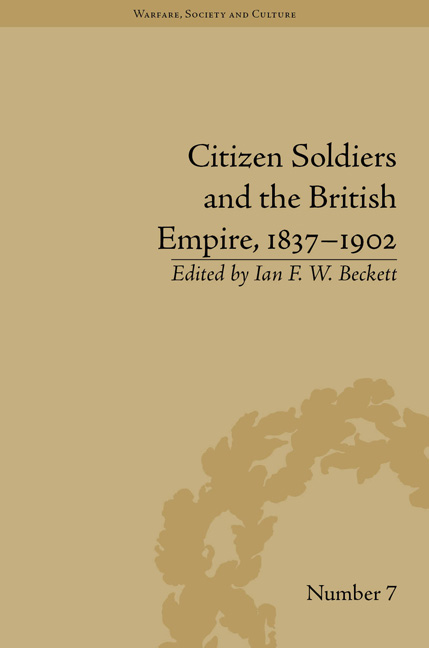Introduction
Summary
A Victorian traveller in the settled part of the British Empire at any time between the 1850s and the 1890s would have encountered much that was exotic and novel. On the other hand, there would be much that would be familiar from churches to clubs, and from railways to parks. One of a number of familiar institutions would be the high visibility of forces of citizen soldiers from Australia's Pinjarrah Mounted Volunteers, to Burma's Moulmein Volunteer Reserve Company, Canada's Victoria Rifles, India's Cossipore Artillery Volunteers, New Zealand's Coromandel Rifle Brigade and South Africa's Lang Kloof Cavalry. Victorians who stayed at home were equally familiar with colonial citizen soldiers, contingents or representatives taking part in the Queen's Jubilee procession on 22 June 1897 including the Canadian Highlanders, the South Australia Mounted Rifles, the Natal Carbineers, the Umvoti Mounted Rifles, the Ceylon Light Infantry Volunteers, the Otago Hussars, the Rhodesia Horse and the Royal Malta Regiment of Militia.
Such units fall clearly within the typology of colonial forces advanced by Karl Hack and Tobias Rettig, who have classified them as ‘a special case’ in being comprised of males who were locally born or resident but not indigenous. As Craig Wilcox has noted, within the empire, these citizen units ‘advertised a community's significance, maturity and cohesion’ and, compared with other local colonial organizations such as cricket clubs or fire brigades, ‘required as much or more initiative and commitment to create and maintain it’. But the citizen soldiers of the empire were neither simply another form of colonial unit, nor solely an expression of settler community. They also represented Britain's own long tradition of raising amateur citizen soldiers – militia, yeomanry and volunteers – for home defence, which is precisely why they would have been so familiar to an itinerant Victorian. By the end of the Queen's reign, there were not only over 360,000 citizen soldiers in Britain but also well over 100,000 more throughout the empire.
It was a model of citizen soldiers that had been widely emulated in British colonies and settlements in the Caribbean, North America and India in the seventeenth and eighteenth centuries.
- Type
- Chapter
- Information
- Citizen Soldiers and the British Empire, 1837–1902 , pp. 1 - 22Publisher: Pickering & ChattoFirst published in: 2014



